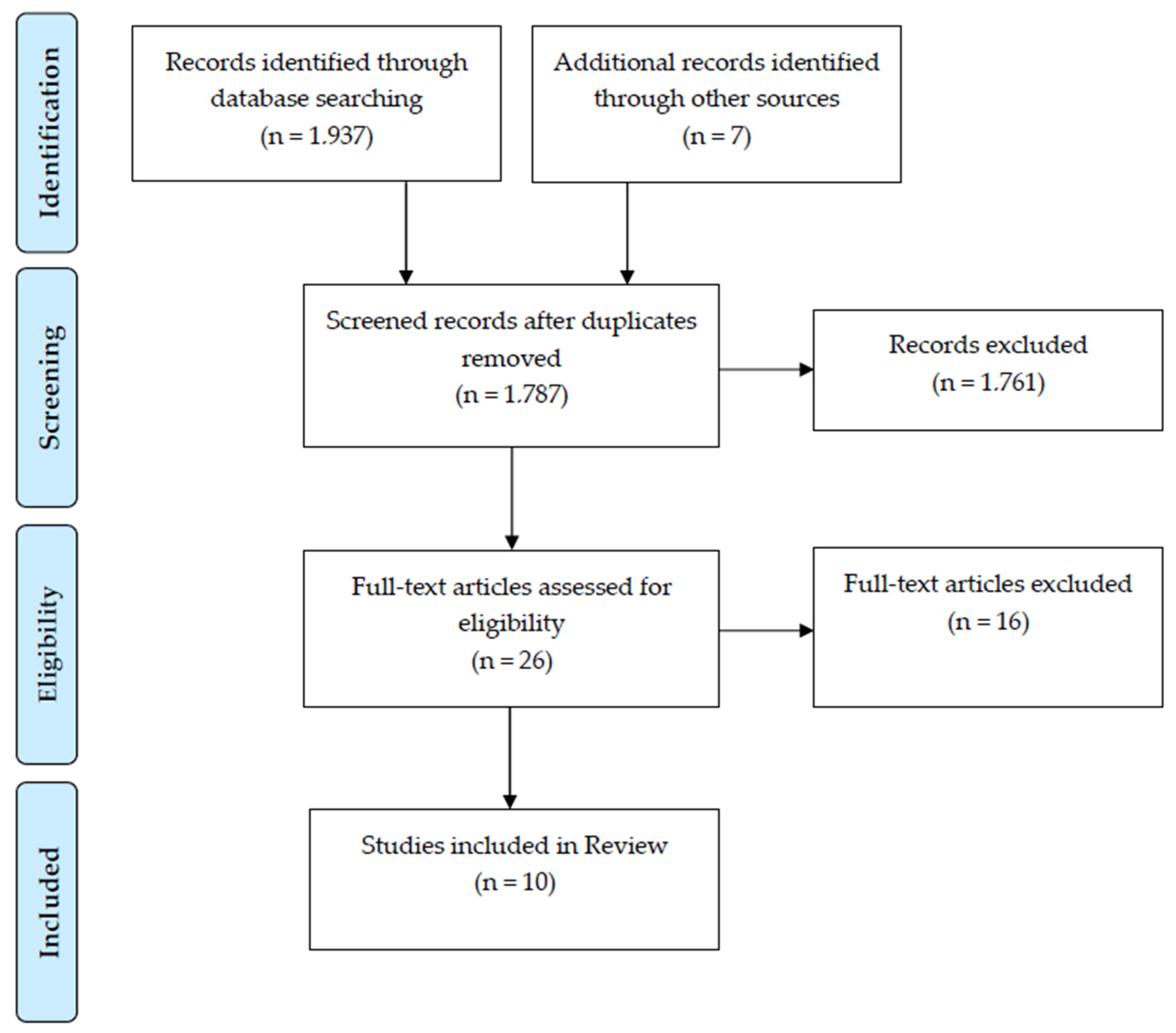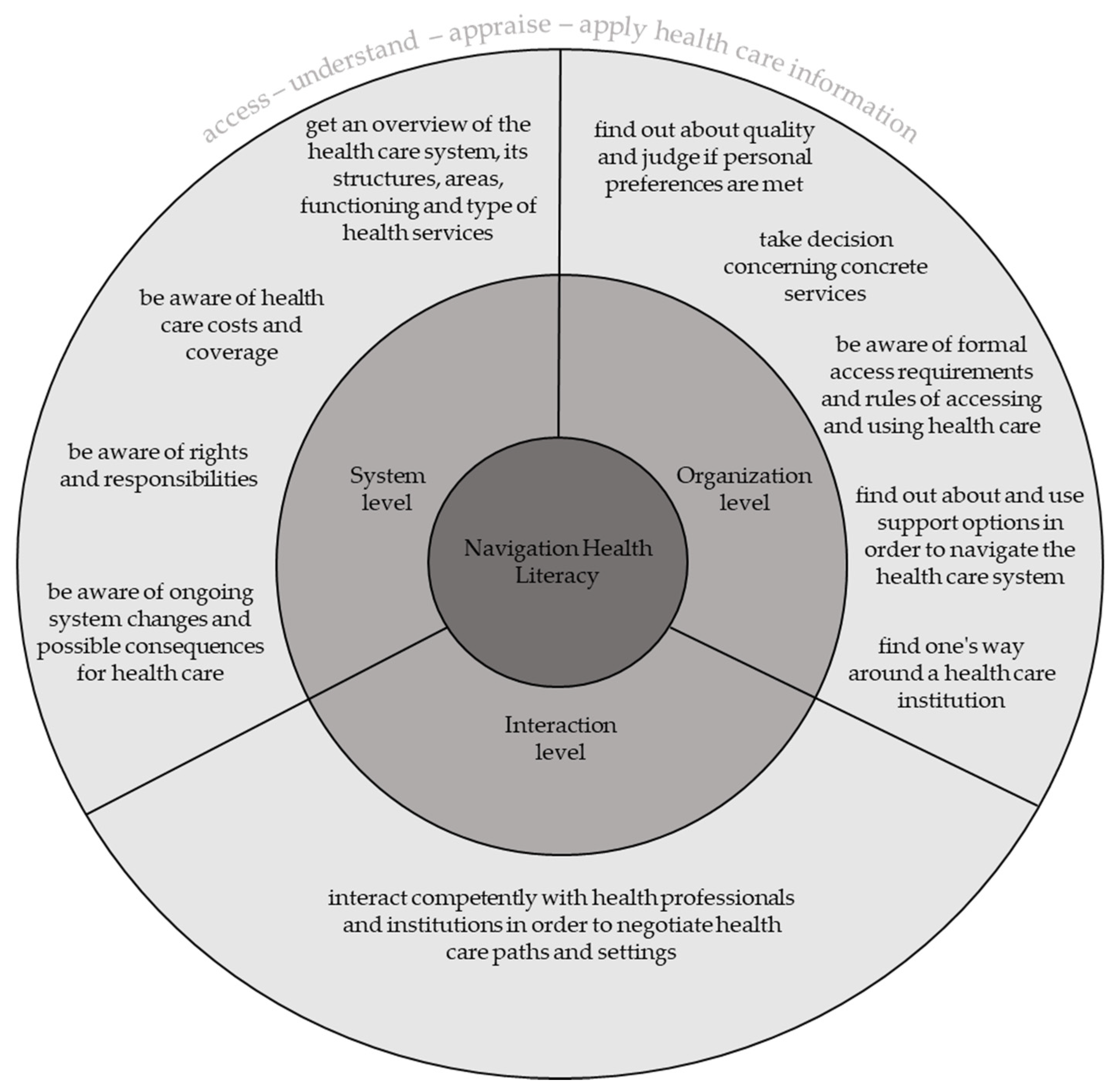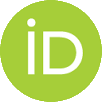Challenges in Navigating the Health Care System: Development of an Instrument Measuring Navigation Health Literacy
Abstract
:1. Introduction
2. Materials and Methods
2.1. Scoping Literature Review
2.2. Conceptual Framework for HL-NAV
2.3. Item Development and Evaluation
3. Results
3.1. Scoping Literature Review
3.2. Conceptual Framework for HL-NAV
3.3. Item Development and Evaluation
4. Discussion
5. Conclusions
Author Contributions
Funding
Acknowledgments
Conflicts of Interest
Appendix A
| Criterion | Inclusion | Exclusion |
|---|---|---|
| Type of article |
|
|
| Study focus |
|
|
| Language |
|
|
Appendix B

References
- Hofmarcher, M.M.; Rusticelli, E.; Oxley, H. Improved Health System Performance through better Care Coordination. OECD Health Work. Pap. 2007. [Google Scholar] [CrossRef]
- Institute of Medicine. Crossing the Quality Chasm: A New Health System for the 21st Century; National Academy Press: Washington, DC, USA, 2001. [Google Scholar]
- Plsek, E.P.; Greenhalgh, T. Complexity science: The challenge of complexity in health care. BMJ 2001, 323, 625–628. [Google Scholar] [CrossRef] [PubMed]
- Sachverständigenrat zur Begutachtung der Entwicklung im Gesundheitswesen. Bedarfsgerechte Steuerung der Gesundheitsversorgung. Gutachten 2018; SVR: Berlin, Germany, 2018. [Google Scholar]
- Schaeffer, D.; Hurrelmann, K.; Bauer, U.; Kolpatzik, K. National Action Plan Health Literacy: Promoting Health Literacy in Germany; KomPart: Berlin, Germany, 2018. [Google Scholar]
- Schaeffer, D.; Gille, S.; Hurrelmann, K. Implementation of the National Action Plan Health Literacy in Germany—Lessons Learned. Int. J. Environ. Res. Public Health 2020, 17, 4403. [Google Scholar] [CrossRef] [PubMed]
- McKenney, K.M.; Martinez, N.G.; Yee, L.M. Patient navigation across the spectrum of women’s health care in the United States. Am. J. Obstet. Gynecol. 2018, 218, 280–286. [Google Scholar] [CrossRef] [PubMed]
- Carter, N.; Valaitis, R.K.; Lam, A.; Feather, J.; Nicholl, J.; Cleghorn, L. Navigation delivery models and roles of navigators in primary care: A scoping literature review. BMC Health Serv. Res. 2018, 18, 96. [Google Scholar] [CrossRef] [Green Version]
- Sofaer, S. Navigating Poorly Charted Territory: Patient Dilemmas in Health Care “Nonsystems”. Med Care Res. Rev. 2009, 66, 75–93. [Google Scholar] [CrossRef]
- Haggerty, J.L. Ordering the chaos for patients with multimorbidity. BMJ 2012, 345, e5915. [Google Scholar] [CrossRef]
- Barry, M.J.; Edgman-Levitan, S. Shared Decision Making—The Pinnacle of Patient-Centered Care. N. Engl. J. Med. 2012, 366, 780–781. [Google Scholar] [CrossRef] [Green Version]
- Lopez, D.; Pratt-Chapman, M.L.; Rohan, E.A.; Sheldon, L.K.; Basen-Engquist, K.; Kline, R.; Shulman, L.N.; Flores, E.J. Establishing effective patient navigation programs in oncology. Support. Care Cancer 2019, 27, 1985–1996. [Google Scholar] [CrossRef]
- Schaeffer, D. Der Patient als Nutzer. Krankheitsbewältigung und Versorgungsnutzung im Verlauf chronischer Krankheit; Huber: Bern, Switzerland, 2004. [Google Scholar]
- Levy, H.; Janke, A. Health Literacy and Access to Care. J. Health Commun. 2016, 21, 43–50. [Google Scholar] [CrossRef]
- Van Der Gaag, M.; Van Der Heide, I.; Spreeuwenberg, P.; Brabers, A.E.; Rademakers, J. Health literacy and primary health care use of ethnic minorities in the Netherlands. BMC Health Serv. Res. 2017, 17, 350. [Google Scholar] [CrossRef] [Green Version]
- Sudore, R.L.; Mehta, K.M.; Simonsick, E.M.; Harris, T.B.; Newman, A.B.; Satterfield, S.; Rosano, C.; Rooks, R.N.; Rubin, S.M.; Ayonayon, H.N.; et al. Limited Literacy in Older People and Disparities in Health and Healthcare Access. J. Am. Geriatr. Soc. 2006, 54, 770–776. [Google Scholar] [CrossRef] [PubMed]
- Quenzel, G.; Schaeffer, D. Health Literacy—Gesundheitskompetenz vulnerabler Bevölkerungsgruppen; Universität Bielefeld: Bielefeld, Germany, 2016. [Google Scholar]
- Sorensen, K.; Broucke, S.V.D.; Fullam, J.; Doyle, G.; Pelikan, J.M.; Slonska, Z.; Brand, H. Health literacy and public health: A systematic review and integration of definitions and models. BMC Public Health 2012, 12, 80. [Google Scholar] [CrossRef] [PubMed] [Green Version]
- Word Health Organization. WHO Global Strategy on People-Centred and Integrated Health Services; Interim report; WHO: Geneva, Switzerland, 2015. [Google Scholar]
- Parker, R.M. Measuring Health Literacy: What? So what? Now what? In Measures of Health Literacy: Workshop Summary; Hernandez, L.M., Ed.; Institute of Medicine of the National Academies: Washington, DC, USA, 2009; pp. 91–98. [Google Scholar]
- Bade, E.; Evertsen, J.; Smiley, S.; Banerjee, I. Navigating the health care system: A view from the urban medically underserved. WMJ Off. Publ. State Med Soc. Wis. 2008, 107, 374–379. [Google Scholar]
- Bodenheimer, T. Coordinating Care—A Perilous Journey through the Health Care System. N. Engl. J. Med. 2008, 358, 1064–1071. [Google Scholar] [CrossRef] [Green Version]
- Jerant, A.; Von Friederichs-Fitzwater, M.M.; Moore, M. Patients’ perceived barriers to active self-management of chronic conditions. Patient Educ. Couns. 2005, 57, 300–307. [Google Scholar] [CrossRef]
- Haslbeck, J.; Klein, M.; Bischofberger, I.; Sottas, B. Leben mit chronischer Krankheit. Die Perspektive von Patientinnen, Patienten und Angehörigen. Obsan Dossier 46; Schweizerisches Gesundheitsobservatorium: Neuchatel, Switzerland, 2015. [Google Scholar]
- Kelly, K.; Doucet, S.; Luke, A. Exploring the roles, functions, and background of patient navigators and case managers: A scoping review. Int. J. Nurs. Stud. 2019, 98, 27–47. [Google Scholar] [CrossRef]
- Ahmed, O.I. Disease Management, Case Management, Care Management, and Care Coordination: A Framework and a Brief Manual for Care Programs and Staff. Prof. Case Manag. 2016, 21, 137–146. [Google Scholar] [CrossRef]
- McBrien, K.A.; Ivers, N.; Barnieh, L.; Bailey, J.J.; Lorenzetti, D.L.; Nicholas, D.; Tonelli, M.; Hemmelgarn, B.; Lewanczuk, R.; Edwards, A.; et al. Patient navigators for people with chronic disease: A systematic review. PLoS ONE 2018, 13, e0191980. [Google Scholar] [CrossRef] [Green Version]
- Rudd, R.E.; Kirsch, I.; Yamamoto, K. Literacy and Health in America; Policy Information Report; ETS: Princeton, NJ, USA, 2004. [Google Scholar]
- M-POHL. WHO Action Network on Measuring Population and Organizational Health Literacy. Available online: https://m-pohl.net/ (accessed on 23 June 2020).
- HLS-EU Consortium. Comparative Report of Health Literacy in Eight EU Member States; The European Health Literacy Survey HLS-EU. Second Revised and Extended Version. 2012. Available online: https://cdn1.sph.harvard.edu/wp-content/uploads/sites/135/2015/09/neu_rev_hls-eu_report_2015_05_13_lit.pdf (accessed on 6 August 2020).
- Rammstedt, B.; Beierlein, C.; Brähler, E.; Eid, M.; Hartig, J.; Kersting, M.; Liebig, S.; Lukas, J.; Mayer, A.-K.; Meold, N.; et al. Quality Standards for the Development, Application, and Evaluation of Measurement Instruments in Social Science Survey Research; German Data Forum (RatSWD): Berlin, Germany, 2015. [Google Scholar]
- Arksey, H.; O’Malley, L. Scoping studies: Towards a methodological framework. Int. J. Soc. Res. Methodol. 2005, 8, 19–32. [Google Scholar] [CrossRef] [Green Version]
- Pleasant, A.; McKinney, J.; Rikard, R. Health Literacy Measurement: A Proposed Research Agenda. J. Health Commun. 2011, 16 (Suppl. S3), 11–21. [Google Scholar] [CrossRef] [PubMed] [Green Version]
- Van Der Heide, I.; Heijmans, M.; Schuit, J.; Uiters, E.; Rademakers, J. Functional, interactive and critical health literacy: Varying relationships with control over care and number of GP visits. Patient Educ. Couns. 2015, 98, 998–1004. [Google Scholar] [CrossRef] [PubMed] [Green Version]
- Ganahl, K.; Dahlvik, J.; Pelikan, J. Was determiniert Gesundheitskompetenz bei Menschen mit Migrationshintergrund aus der Türkei und Ex-Jugoslawien. In Health Literacy: Forschungsstand und Perspektiven; Schaeffer, D., Pelikan, J.M., Eds.; Hogrefe: Bern, Switzerland, 2017; pp. 205–220. [Google Scholar]
- Farin, E.; Ullrich, A.; Nagl, M. Health education literacy in patients with chronic musculoskeletal diseases: Development of a new questionnaire and sociodemographic predictors. Health Educ. Res. 2013, 28, 1080–1091. [Google Scholar] [CrossRef] [PubMed] [Green Version]
- Polit, D.F.; Beck, C.T. The content validity index: Are you sure you know what’s being reported? Critique and recommendations. Res. Nurs. Health 2006, 29, 489–497. [Google Scholar] [CrossRef] [PubMed] [Green Version]
- Davis, L.L. Instrument review: Getting the most from a panel of experts. Appl. Nurs. Res. 1992, 5, 194–197. [Google Scholar] [CrossRef]
- Nassar-McMillan, S.C.; Wyer, M.; Oliver-Hoyo, M.; Ryder-Burge, A. Using Focus Groups in Preliminary Instrument Development: Expected and Unexpected Lessons Learned. Qual. Rep. 2010, 15, 621–1634. [Google Scholar]
- McRackan, T.R.; Velozo, C.A.; Holcomb, M.A.; Camposeo, E.L.; Hatch, J.L.; Meyer, T.A.; Lambert, P.R.; Melvin, C.L.; Dubno, J.R. Use of Adult Patient Focus Groups to Develop the Initial Item Bank for a Cochlear Implant Quality-of-Life Instrument. JAMA Otolaryngol. Neck Surg. 2017, 143, 975–982. [Google Scholar] [CrossRef]
- Rudd, R.E. Navigating Hospitals. Lit. Harvest 2004, 11, 19–24. [Google Scholar]
- Osborne, R.H.; Batterham, R.; Elsworth, G.R.; Hawkins, M.; Buchbinder, R.W. The grounded psychometric development and initial validation of the Health Literacy Questionnaire (HLQ). BMC Public Health 2013, 13, 658. [Google Scholar] [CrossRef] [Green Version]
- Paasche-Orlow, M.K.; Wolf, M.S. The causal pathways linking health literacy to health outcomes. Am. J. Health Behav. 2007, 31 (Suppl. S1), 19–26. [Google Scholar] [CrossRef]
- Perez, L.; Morales, K.H.; Klusaritz, H.; Han, X.; Huang, J.; Rogers, M.; Bennett, I.M.; Rand, C.S.; Ndicu, G.; Apter, A.J. A health care navigation tool assesses asthma self-management and health literacy. J. Allergy Clin. Immunol. 2016, 138, 1593–1599. [Google Scholar] [CrossRef] [PubMed] [Green Version]
- Fields, B.; Rodakowski, J.L.; James, A.E.; Beach, S. Caregiver health literacy predicting healthcare communication and system navigation difficulty. Fam. Syst. Health 2018, 36, 482–492. [Google Scholar] [CrossRef] [PubMed]
- Gui, X.; Chen, Y.; Pine, K. Navigating the Healthcare Service “Black Box”. In Proceedings of the ACM on Human-Computer Interaction; Association for Computing Machinery (ACM): New York, NY, USA, 2018; Volume 2, pp. 1–26. [Google Scholar]
- Osborne, R.H.; Elsworth, G.R.; Whitfield, K. The Health Education Impact Questionnaire (heiQ): An outcomes and evaluation measure for patient education and self-management interventions for people with chronic conditions. Patient Educ. Couns. 2007, 66, 192–201. [Google Scholar] [CrossRef]
- Duke, C.C.; Lynch, W.D.; Smith, B.; Winstanley, J. Validity of a New Patient Engagement Measure: The Altarum Consumer Engagement (ACE) Measure. Patient Patient Cent. Outcomes Res. 2015, 8, 559–568. [Google Scholar] [CrossRef] [PubMed]
- Nutbeam, D. Health literacy as a public health goal: A challenge for contemporary health education and communication strategies into the 21st century. Health Promot. Int. 2000, 15, 259–267. [Google Scholar] [CrossRef] [Green Version]
- Glouberman, S.; Mintzberg, H. Managing the Care of Health and the Cure of Disease—Part I: Differentiation. Health Care Manag. Rev. 2001, 26, 56–69. [Google Scholar] [CrossRef]
- Morse, J.M.; Solberg, S.M.; Neander, W.L.; Bottorff, J.L.; Johnson, J.L. Concepts of caring and caring as a concept. Adv. Nurs. Sci. 1990, 13, 1–14. [Google Scholar] [CrossRef]
- Kruk, M.E.; Gage, A.D.; Arsenault, C.; Jordan, K.; Leslie, H.H.; Roder-DeWan, S.; Adeyi, O.; Barker, P.; Daelmans, B.; Doubova, S.V.; et al. High-quality health systems in the Sustainable Development Goals era: Time for a revolution. Lancet Glob. Health 2018, 6, e1196–e1252. [Google Scholar] [CrossRef] [Green Version]
- Word Health Organization. Towards People-Centred Health Systems: An Innovative Approach for Better Health Systems; WHO Regional Office for Europe: Copenhagen, Denmark, 2016. [Google Scholar]
- Schoen, C.; Osborn, R.; Squires, D.; Doty, M.; Pierson, R.; Applebaum, S. New 2011 Survey of Patients with Complex Care Needs in Eleven Countries Finds that Care is Often Poorly Coordinated. Health Aff. 2011, 30, 2437–2448. [Google Scholar] [CrossRef] [Green Version]
- Ellen, M.; Wilson, M.G.; Vélez, M.; Shach, R.; Lavis, J.N.; Grimshaw, J.M.; Moat, K.A.; Garner, S. Addressing overuse of health services in health systems: A critical interpretive synthesis. Health Res. Policy Syst. 2018, 16, 48. [Google Scholar] [CrossRef] [Green Version]
- Enthoven, A.C. Integrated delivery systems: The cure for fragmentation. Am. J. Manag. Care 2009, 15, 284–290. [Google Scholar]
- Choudhry, F.R.; Ming, L.C.; Munawar, K.; Zaidi, S.T.R.; Patel, R.P.; Khan, T.M.; Elmer, S. Health Literacy Studies Conducted in Australia: A Scoping Review. Int. J. Environ. Res. Public Health 2019, 16, 1112. [Google Scholar] [CrossRef] [PubMed] [Green Version]
- Salkind, N. Encyclopedia of Research Design; SAGE Publications: Thousand Oaks, CA, USA, 2010. [Google Scholar]
- Abubakar, I.J.; Wimmer, B.C.; Bereznicki, L.R.; Dwan, A.C.; Black, J.A.; Bezabhe, W.M.; Peterson, G.M. Development and Validation of an Atrial Fibrillation Knowledge Assessment Tool (AFKAT). Int. J. Environ. Res. Public Health 2020, 17, 1721. [Google Scholar] [CrossRef] [PubMed] [Green Version]
- Waltz, C.F.; Strickland, O.L.; Lenz, E.R. Measurement in Nursing and Health Research, 3rd ed.; Springer Publishing Co.: New York, NY, USA, 2005. [Google Scholar]
- Lynn, M.R. Determination and Quantification of Content Validity. Nurs. Res. 1986, 35, 382–385. [Google Scholar] [CrossRef] [PubMed]


| Reference | Definitions Related to HL-NAV | Provided Questionnaire | |
| 1. | Rudd (2004) [41] (p. 19) | “The written word—in the form of signs, postings, and paper work […] often reflect the specialized language of the professionals who work there. Overall, the language, density, and complexity of these materials establish a literacy environment that makes demands on all who enter. [Navigating Hospitals] focuses on the literacy environment of hospitals and on the factors that hinder, as well as support, the ability of individuals to make their way to, and within, a hospital.” | / |
| 2. | Rudd, Kirsch and Yamamoto (2004) [28] (p. 8) | “Finally, attention to barriers to programs, services, and care has shaped a fifth health literacy activity—one related to bureaucratic demands, referred to as “navigation.” Navigation of the health care system encompasses those activities related to rights and responsibilities, application for insurance and other coverage plans, and informed consent for procedures and studies.” | The Health Activities Literacy Scale (HALS) |
| 3. | Osborne et al. (2013) [42] (p. 8) | “To find out about services and supports so they get all their needs met. Able to advocate on their own behalf at the system and service level.” | The Health Literacy Questionnaire (HLQ) |
| Reference | Definitions Related to Navigation Competence | Provided Questionnaire | |
| 4. | Paasche-Orlow and Wolf (2007) [43] (p. 20) | “A concept that has been advanced to explain how people with limited health literacy may have difficulty with using health services is the notion of navigation. The concept is meant to include all of the skills needed to go from one place to another in the pursuit of medical care.” | / |
| 5. | Sofaer (2009) [9] (p. 76) | “The concept of “patient navigation” has been coined and used in a variety of ways and contexts. I use it here to denote the process(es) by which patients and/or their caregivers move into and through the multiple parts of the health care enterprise to gain access to and use its services in a manner that maximizes the likelihood of gaining the positive health outcomes available while minimizing inefficiencies that result, for both patients and providers, from complexity and poor coordination.” | / |
| 6. | Perez et al. (2016) [44] (p. 1593) | “Navigation tasks can include successful medication recall, understanding copay and insurance requirements for medical visits, and knowing how to organize and respond to provider recommendations. Navigation and other self-management skills, […] depend on health literacy.” | Navigating Ability Questionnaire (NAV2) |
| 7. | Fields et al. (2018) [45] (p. 482) | “The ability to locate and arrange services and supports for the care recipient.” | Health care communication and navigation of services and supports (HCNS) |
| 8. | Gui, Chen and Pine (2018) [46] (p. 22) | “Navigational competence is a set of integrated capabilities consisting of knowledge and skills for individual health care consumers to go through complex service provision systems effectively.” | / |
| Reference | Definitions Related to Interaction/Communication | Provided Questionnaire | |
| 9. | Osborne et al. (2007) [47] (p. 197) | “Individual’s understanding of and ability to interact with a range of health organizations and health professionals, […] confidence and ability to communicate and negotiate with health care providers to get needs met.” | Health Education Impact Questionnaire (heiQ) |
| 10. | Duke et al. (2015) [48] (p. 559) | “Confidence and ability to ask about and participate in treatment decisions.” | The Altarum Consumer Engagement (ACE) Measure |
| Characteristics | Focus Group Participants (N = 32) | Pre-Test Participants (N = 33) | ||
|---|---|---|---|---|
| n | % | n | % | |
| Gender | ||||
| male | 16 | 50.0 | 16 | 48.5 |
| female | 16 | 50.0 | 17 | 51.5 |
| Age | ||||
| 18–29 | 7 | 21.9 | 8 | 24.2 |
| 30–44 | 14 | 43.8 | 7 | 21.2 |
| 45–59 | 5 | 15.6 | 9 | 27.3 |
| 60+ | 6 | 18.8 | 9 | 27.3 |
| School attainment | ||||
| high school graduation | 12 | 37.5 | 13 | 39.4 |
| no high school graduation | 20 | 62.5 | 20 | 60.6 |
| Employment status | ||||
| employed | 20 | 62.5 | - | - |
| unemployed | 7 | 21.8 | - | - |
| retired | 5 | 15.6 | - | - |
| Migration status | ||||
| yes | 8 | 25.0 | - | - |
| no | 24 | 75.0 | - | - |
| Chronic illness | ||||
| yes | 12 | 37.5 | - | - |
| no | 20 | 62.5 | - | - |
| Region a | ||||
| urban | 16 | 50.0 | - | - |
| more rural | 16 | 50.0 | - | - |
| HL-NAV Task | Step of Information Processing | Initial Item | I-CVI a,b | Revision Made c | Final Item |
|---|---|---|---|---|---|
| get an overview of the health care system, its structures, areas, functioning and type of health services | understand | Item 1 | 0.67 | summarize items; add example | 1. understand information on how the health care system works [e.g., which type of health services are available] |
| Item 2 | 1.0 | ||||
| get an overview of the health care system, its structures, areas, functioning and type of health services | appraise | Item 3 | 1.0 | summarize items; revise wording | 2. judge which type of health service you need in case of a health problem |
| Item 4 | 0.83 | ||||
| Item 6 | 0.83 | ||||
| be aware of health care costs and coverage | appraise | - | - | formulation of a new item with example | 3. judge to what extent your health insurance covers a particular health service [e.g., are there any co-payments] |
| be aware of ongoing system changes and possible consequences for health care | understand | Item 15 | 0.67 | revise wording; formulate more specifically | 4. understand information on ongoing health care reforms that might affect your health care |
| be aware of rights and responsibilities | access | Item 10 | 1.0 | revise wording | 5. find out about your rights as a patient or user of the health care system |
| take decision concerning concrete services | apply | - | - | formulation of a new item with example | 6. decide for a particular health service [e.g., choose from different hospitals] |
| find out about quality and judge if personal preferences are met | access | Item 7 | 1.0 | revise wording | 7. find information on the quality of a particular health service |
| find out about quality and judge if personal preferences are met | appraise | Item 8 | 1.0 | formulate more specifically | 8. judge if a particular health service will meet your expectations and wishes on health care |
| be aware of formal access requirements and rules of accessing and using health care | understand | Item 5 | 1.0 | revise wording; formulate more specifically | 9. understand how to get an appointment with a particular health service |
| find out about and use support options in order to navigate the health care system | access | - | - | formulation of a new item | 10. find out about support options that may help you to orientate yourself in the health care system |
| find one’s way around a health care institution | apply | Item 13 | 0.83 | summarize items; revise wording; add example | 11. locate the right contact person for your concern within a health care institution [e.g., in a hospital] |
| Item 14 | 1.0 | ||||
| interact competently with health professionals and institutions in order to negotiate health care paths and settings | apply | Item 11 | 1.0 | summarize items revise wording | 12. stand up for yourself if your health care does not meet your needs |
| Item 12 | 1.0 | ||||
| be aware of rights and responsibilities | - | Item 9 | 0.67 | delete | - |
| - | - | - | - | Add introduction | “Now we would like to know how easy it is to inform yourself on finding your way around the health care system. It does not matter whether you use information for yourself or for someone else. By health service we typically mean a doctor, specialist, hospital, nursing home, rehabilitation or mental health facility. On a scale from very easy to very difficult, how easy would you say it is to” |
© 2020 by the authors. Licensee MDPI, Basel, Switzerland. This article is an open access article distributed under the terms and conditions of the Creative Commons Attribution (CC BY) license (http://creativecommons.org/licenses/by/4.0/).
Share and Cite
Griese, L.; Berens, E.-M.; Nowak, P.; Pelikan, J.M.; Schaeffer, D. Challenges in Navigating the Health Care System: Development of an Instrument Measuring Navigation Health Literacy. Int. J. Environ. Res. Public Health 2020, 17, 5731. https://doi.org/10.3390/ijerph17165731
Griese L, Berens E-M, Nowak P, Pelikan JM, Schaeffer D. Challenges in Navigating the Health Care System: Development of an Instrument Measuring Navigation Health Literacy. International Journal of Environmental Research and Public Health. 2020; 17(16):5731. https://doi.org/10.3390/ijerph17165731
Chicago/Turabian StyleGriese, Lennert, Eva-Maria Berens, Peter Nowak, Jürgen M. Pelikan, and Doris Schaeffer. 2020. "Challenges in Navigating the Health Care System: Development of an Instrument Measuring Navigation Health Literacy" International Journal of Environmental Research and Public Health 17, no. 16: 5731. https://doi.org/10.3390/ijerph17165731






